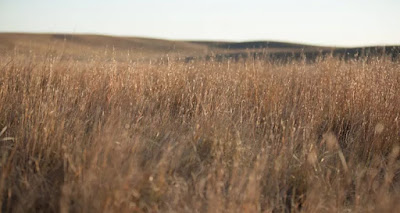 |
| Grassland in the program (Natural Resources and Conservation Service photo) |
Farm policy expert Carl Zulauf of Ohio State told Abbott: "The new Farm Bill presents a generational opportunity to repurpose CRP." Abbott reports, "Grasslands will be the largest component of CRP, he said." Zach Ducheneaux, administrator of USDA's Farm Service Agency, added: "A carbon-capture CRP initially focused on grasslands may offer more potential to capture carbon than the much-debated, currently unproven carbon markets for the 318 million acres of principal crops in the United States. . . . Grassland CRP clearly demonstrates that conservation priorities and agricultural productivity not only have the capacity to coexist but also complement and enhance one another."
CRP pays landowners "an annual rent in exchange for taking fragile cropland out of production with 'the long-term goal to reestablish valuable land cover to help improve water quality, prevent soil erosion, and reduce loss of wildlife habitat through contracts that run for 10 to 15 years,' said a USDA summary," Abbott notes. It was re-established in 1985, as a successor to the Soil Bank program of the 1950s and '60s, which was phased out due to concerns that it hurt farm economies in some places. Now, it's the "largest federal land-retirement program. . . . It costs close to $2 billion a year. . . . There were 23 million acres in the reserve at the end of May. The program cap is 27 million acres."
CRP acreage dipped around 2007 "due to factors that included a reduction in rental rates and higher commodity prices that made crop production more attractive," Abbott explains. "[It] was reduced repeatedly over the years by Congress. The 2018 farm law reversed course, starting at 24 million acres in fiscal 2019 and rising to 27 million acres this year. . . Grassland CRP pays an annual rent while allowing producers to graze livestock and harvest hay from the land. Rental payments were set at a minimum of $15 an acre. The USDA says the program helps sequester carbon in vegetation and the soil and increases resilience to drought and wildfire."
"Of the land accepted for Grasslands CRP, 430,899 acres were in Colorado, followed by 417,865 acres in Nebraska and 325,443 acres in South Dakota," Abbott adds. "For the CRP overall, the leading states were Colorado, with 2.45 million acres; Texas, with 2.16 million acres; and South Dakota, with 2.1 million acres."
No comments:
Post a Comment